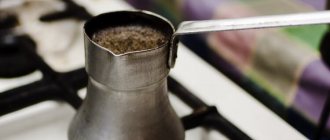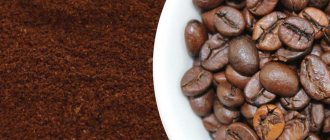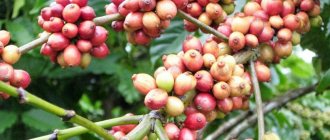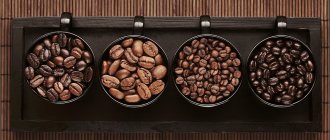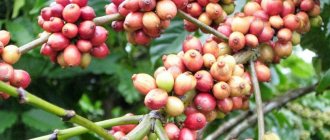We know who will prepare coffee for you - our coffee machines. They will make the morning good, the office team united, and family life romantic for many years.
But which type of coffee should you choose?
There is such a variety of types, processing and preparation methods on the market that an ordinary person can simply get confused in choosing.
Just for you, Cofis specialists have prepared a detailed analysis of this issue, breaking everything down to the smallest details that will help you find the right option.
But what kind of coffee will you choose?
The Coffice company invites you to familiarize yourself with the rating of types of coffee for coffee machines.
Capsule coffee
The coffee inside the capsule may vary. Most well-known brands have a fairly wide range of capsules, which differ in grinding and frying methods, strength and flavor shades.
It's important not to just buy the coffee capsules you like best - choose branded capsules for a specific brand of coffee machine.
Benefits of capsule coffee:
- Highest quality - The entire process of grinding and dosing coffee takes place under the strict supervision of specialists using high-precision equipment in Italy.
- The right amount of coffee - One capsule is from 7.5 to 9 grams of coffee, it all depends on the grind. It is this ratio between weight and grind, according to coffee experts, that ensures the richness and unsurpassed aroma of the drink.
- Sealed packaging - Each portion of coffee, after passing the grinding stage, is packaged in a sealed package. Thus, manufacturers preserve the taste of coffee for you for a long time. After all, everyone knows that within a few hours after opening a package of coffee, it absorbs all odors, as a result of which it loses its aroma.
- Only natural, freshly ground coffee - You can be sure that capsule coffee is 100% coffee without any impurities, chemicals or flavorings.
- No bacteria - All coffee grounds remain in the capsule, which after preparing the drink is easily removed and thrown away. This ensures technological purity of the work.
- Quality Materials – Coffee capsules are made from quality materials that are used in the food industry.
(Buy capsule coffee in our store)
Ground coffee
Ground coffee has long been popular among consumers. It is convenient, practical and does not require additional grinding efforts. However, when purchasing such a product in stores, people often do not pay attention to the disadvantages of such coffee.
Cons of ground coffee:
- it is impossible to regulate the quality and degree of grinding - manufacturers do not always give the opportunity to choose the degree of grinding, although the quality of the prepared coffee depends on this;
- quickly loses its aroma - experts say that after 15 minutes from the moment of grinding, the essential oils contained in coffee enter into a chemical reaction with the environment and oxidize.
( Buy ground coffee
in our store)
Coffee beans
True coffee gourmets prefer grain coffee. They organize a whole ritual at home - from grinding coffee to brewing it, getting a fresh, aromatic drink every time.
However, this method of making coffee is not suitable for everyone.
Minuses:
- the need for grinding using an additional device (coffee grinder) or coffee machine
- foreign particles may enter
( Buy bean coffee in our store)
Coffee pods
Pods are a special type of packaging for ground coffee. Unlike capsule coffee, coffee pods are pressed and packaged in several layers of paper.
The resulting product is used for compression coffee preparation, i.e. espresso. Manufacturers focus on the quality of the prepared drink, the environmental friendliness of the material for the pods and ease of use.
Minuses:
- lower dosage of coffee - pods usually contain less coffee than capsules
- use - after each preparation, it is inconvenient to replace the pod yourself - it is hot and coffee drips from it
- limited selection of varieties - you can find no more than 10 types of coffee in pods for a certain model of coffee maker
- coffee quality - experts note that the quality of pressed coffee in pods is not always good
(Buy coffee in monodoses on our website)
Freeze-dried coffee
Freeze-dried is a type of instant coffee that has retained almost all the nutritional and energy value of the product. Its advantages are low cost, longer shelf life and ease of preparation. However, in terms of taste, it is very tired of grain coffee.
Minuses:
- the aroma of coffee beans is lost - in the process of making freeze-dried coffee, essential oils are lost, which imbue coffee with a unique aroma
- coffee quality - this production method often uses poor quality coffee beans (chopped/broken)
- artificial flavors - to make coffee smell as familiar to us, manufacturers often use chemical additives and flavors
- high concentration of caffeine.
( Buy instant coffee in our store)
Coffee classification
It is very difficult to say with complete confidence how many varieties there are in the world today. The assortment of coffee is wide, because the product is classified according to many criteria; accordingly, the beans differ in taste, richness of aroma and price. The names of coffee varieties are determined by the following criteria:
- Country of Origin;
- by the name of the port from where the product is transported;
- by type of tree;
- by the name of the plantation where the trees are grown;
- by the name of the specific geographical point where the plants are grown;
- in accordance with the international classification;
- commercial name.
Classification of grains by quality
- elite coffee varieties are marked AA and A;
- good coffee – AB marking;
- grains of medium quality - markings B and BA;
- Low quality grains - marked BB and C.
Classification by geographical location
- grains from mountainous areas - SHG (Striktly High Grown);
- grains grown in the foothills - HG (High Grown);
- grains grown on flat terrain - CS (Central Standard);
- very hard grains - SHB (Strictly Hard Bean);
- hard grains - HB (Hard Bean).
Classification by grain processing process
- AP (American preparation) - preparation according to the American method - no more than 23 defects are removed from every 300 grams of raw materials;
- EP (European preparation) - preparation according to European methods - no more than 8 defects are removed from every 300 grams of raw materials.
Classification by degree of grinding
If you choose ready-to-brew coffee powder, it is important to choose the product wisely in accordance with the preparation recipe. There are several degrees of grinding of grains.
| Grinding | English name | Peculiarity | Extraction time (drink preparation speed) |
| Rude | Coarse grind | Used for preparation in a piston type coffee maker | 6 to 8 minutes |
| Average | Medium grind | Coffee of this grind is considered universal, the raw materials are suitable for preparing any drinks and by any means. | 4 to 6 minutes |
| Thin | Fine grind | Used in filter coffee makers | 1 to 4 minutes |
| Fine espresso | Fine espresso grind | Used in espresso coffee makers | No more than 4 minutes |
| Powdery | Pulverized | This grinding powder is suitable for making Turkish coffee | 7 to 10 minutes |
Types of basic coffee drinks
The popularity of coffee drinks depends on both taste and complexity of preparation. Therefore, in order to get coffee with a bright taste and magical aroma, Cofis specialists have analyzed for you the basic principles of preparing basic coffee drinks.
- Espresso. Prepared from dark roasted coffee varieties. To prepare it, use 7-10 g of coffee per 25-35 ml of water. Espresso is the main base for preparing other types of coffee drinks.
- Doppio. Double shot of espresso.
- Triplo. Triple shot of espresso.
- Ristretto. This is coffee prepared using the espresso method, but more intense. To prepare it, the same amount of coffee powder is used, but the amount of water is reduced to 18 ml.
- Americano and lungo. A large portion of coffee with a lower concentration of caffeine and other active substances. The difference is that for Americano and Lungo, water for dilution is supplied separately.
Based on these basic drinks, interesting varieties of coffee drinks are also prepared in various variations with additions.
Types of coffee beans
There are two basic types of coffee crops. Moreover, plants of the same species can grow in different countries. The climate in which coffee grows, as well as the composition of the soil in which the trees are grown, greatly influence the taste of the coffee bean.
The majority of the world's coffee bean supply produces two types of crops.
- Arabica . This is the name of the fruits of the Arabian coffee tree. It has over 50 different varieties.
- Robusta . The second most popular variety of coffee beans owes its appearance to a crop called Canephora robusta.
Arabica is the oldest known and consumed type of coffee. It grows not only on the Arabian Peninsula, which gave the variety its name, but also in South and Central America. These coffee trees prefer high altitude areas and alternating rainy and hot seasons. They do not tolerate cold and various diseases well.
Arabica beans are highly saturated with oils, which provide the recognizable soft and delicate taste of the drink. Its shades vary not only depending on the variety, but also on the weather conditions in which the beans were ripened, so the taste of coffee even within the same variety can vary. Arabica beans provide about 75% of global coffee consumption, consumed alone or as part of blends.
Robusta beans contain much more caffeine and amino acids, and the high content of chlorogenic acids gives the characteristic astringent bitterness to the beans. Therefore, this type of coffee bean is subjected to pre-treatment, which softens the harsh taste. Robusta, unlike Arabica, is extremely rarely consumed in its pure form; more often it is added to mixtures to give greater strength. In addition, robusta is cheaper due to its unpretentiousness and ease of cultivation, so mixing varieties reduces the cost of the finished product.
Both types of coffee beans are basic. Each is represented by many varieties. They are mixed in different proportions, creating blends with original taste and aroma. The variety of flavors can be varied as desired, so the richness of the coffee palette is truly inexhaustible.
Types of coffee with milk
The most common combination is coffee with milk or cream. Milk is a component that limits the effect of caffeine, so these drinks can be drunk by those for whom strong coffee is contraindicated.
In the rating, drinks are sorted by demand:
- Cappuccino. Prepared on an espresso basis. Consists of three parts: one of which is coffee, the other two are milk. When forming a cocktail, the top part of the milk is whipped into foam and decorated with cinnamon or cocoa. The resulting drink is strong with a clearly noticeable taste and aroma of espresso.
- Macchiato. It is prepared on the basis of espresso with the addition of a small amount of milk, which is whipped into thick foam. The drink is three-layered with a milky head that does not mix with coffee.
- Latte. A coffee cocktail made with espresso. Consists of four parts: one part coffee, one milk foam and two parts milk. The resulting drink is soft and not strong, since the concentration of coffee in it is lower than that of cappuccino.
- Mocha. A strong coffee drink made on the basis of espresso with the addition of milk, chocolate and whipped cream.
- Flat white. An Australian coffee drink made by adding steamed, slightly foamed milk to a double shot of espresso.
- Marocino. This is another recipe for coffee with chocolate, which is sprinkled on top of a shot of espresso with milk frothed.
- Breve. American version of latte. Prepared on the basis of espresso with cream and milk. The coffee drink is not strong, with a subtle coffee aroma and a creamy aftertaste.
- Con Pana or Viennese coffee. It is one of the most common coffee drinks, in which a single or double espresso is served under a cap of whipped cream.
- Raf coffee. This unusual coffee cocktail consists of a shot of espresso with cream and vanilla sugar. All ingredients are whipped with a cappuccino maker and served in a volume and shape similar to cappuccino. Fans replace vanilla sugar with syrup or a teaspoon of honey, resulting in a cocktail with an unusual taste and aroma.
Coffee calories
Additives for coffee drinks
Many people like to add milk or sugar to their drink, although there are plenty of black coffee connoisseurs. A seemingly insignificant supplement may turn out to be too high in calories.
The following are usually added to drip coffee and espresso:
- Sugar – 16 kcal per 1 teaspoon;
- 2% milk – 15 kcal per 2 tablespoons;
- Whole milk – 19 kcal per 2 tablespoons;
- Heavy whipping cream - 101 kcal per 2 tablespoons;
- Milk and cream (50/50 ratio) – 37 kcal per 2 tablespoons;
- Skim milk – 10 kcal per 2 tablespoons.
Everything is relative. Let's say at home you put 1 teaspoon of sugar and 2 tablespoons of 2% milk in your coffee. In total you get 36 kcal (of which 5 kcal for drip coffee).
If you decide to drink another mug, you will already get 72 kcal. Cookies contain the same amount of calories. To burn them, you need to go for a walk lasting 10-15 minutes. It's not all bad, even if you choose whole milk.
Many still add much more than two tablespoons of milk. This can have a big impact on calories.
Calorie content of popular drinks
Espresso
Let's start with the classics. One shot of espresso contains approximately 1 kcal. Even if you order doppio, this calorie content can be neglected. The same goes for lungo and ristretto, because the volume of water does not affect the number of calories.
The calorie content of a macchiato is 13-18 kcal due to the addition of milk.
Americano or long black
They're technically different drinks, but the ingredients are exactly the same: a couple shots of espresso and water.
Calorie content is approximately 3 kcal.
Cappuccino
Cappuccino has fewer calories than other milk drinks. The fact is that there is not so much milk in cappuccino, but foam. On average, calorie content is 110-135 kcal.
Due to the large volume of milk, the calorie content of a flat white increases to 155-170 kcal.
Latte
Latte is one of the most calorie-rich coffee drinks. True, the calorie content depends on the type of milk used. If you order a latte without any changes, it will contain 120-150 kcal. Chai lattes usually seem "healthier," but they actually have more calories than espresso-based lattes.
By the way, serving size is important too! A small latte with good milk can cost 70 kcal. But a serving of Venti from Starbucks will be 250 kcal even with skim milk.
Mocha
The calorie content of this drink is one of the highest. The exact numbers depend on the specific coffee shop. Typically, mocha contains 290 kcal. It's all about the chocolate syrup.
Bulletproof coffee
This drink is gaining popularity. If you prepare it according to our recipe, then coffee will cost 200 kcal. If you follow some other recipes (including the one published by the Bulletproof brand itself), the calorie content can reach 500 kcal. This drink should be avoided!
Coffee with alcohol
Coffee with other additives is also no less in demand, although it is limited for a number of people. For example, alcohol is contraindicated for drivers, so coffee containing alcohol cannot compete in demand with a coffee-milk drink.
Therefore, if you do not intend to drive, then you can easily afford to enjoy unsurpassed coffee with the addition of high-quality cognac or whiskey.
- Irish. One of the most popular drinks, which is prepared on the basis of espresso with the addition of strong alcohol - Irish whiskey (45 ml of whiskey is added to 90 ml of coffee), as well as cream and cane syrup.
- Coretto. It is a serving of espresso with the addition of various types of liqueurs (20 ml of liquor per serving of espresso).
- Coffee brulot. A hot coffee drink with a bright, memorable taste. It got this taste thanks to its composition - strong black coffee, brandy, sugar and spices (cloves, lemon or orange zest, vanilla stick).
Coffee production
Brazil and Vietnam remain the leading producing countries in the coffee industry. They are followed by Colombia and Indonesia. Farmers in Madagascar are not far behind – the specific soil and location above sea level create ideal conditions for high coffee yields.
Coffee varieties from Venezuela, Guatemala, and Indonesia lag behind due to the small number of plantations. But they have their own peculiarity - the Arabica grown here acquires a delicate creamy taste.
The volumes of coffee production and export are constantly increasing - in the period 1991-2015. rose by 5100%. In 2016, more than 90 thousand 60-kilogram bags of Arabica and over 56 thousand bags of Robusta were produced in the world.
African coffee varieties are distinguished by excellent acidity: the exotic aftertaste of Malawi Mapanga, the luxurious nutty aroma of the elite Uganda Bugishu constantly find new fans. Ethiopia Sidamo will give a light chocolate tint, and in a drink made from Ethiopia Jimmah grains, the highlight will be a wine smell.
Coffee with additives
In addition to alcohol, in the process of preparing a coffee drink, other, no less interesting components are also added - ice, ice cream, cream and even lemon juice. For your information, Cofis has presented you with the most popular coffee drinks with additives:
- Frappe. This drink is also called “ice coffee” because it is made from a shot of double espresso with ice and milk. For this portion of espresso you will need 100 ml of milk and 3-5 ice cubes.
- Affogato. This unusual name is given to a coffee dessert made from ice cream topped with a shot of espresso. In addition, you can also offer chocolate, whipped cream or lemon zest.
- Greek coffee. Espresso with cream, ice and chocolate sauce.
- Espresso Romano. From the name it is clear that this drink consists of espresso with the addition of lemon juice. If cinnamon is added to this, the drink is called Sicilian coffee.
- Coffee with cola and cream. An energy drink that can only be consumed by healthy people. It is prepared like regular coffee, then cream, cola and ice are added.
- Coffee with ginger. A good immune stimulant and aphrodisiac, but it is contraindicated for a large number of people - pregnant women, heart patients and some other categories. The preparation features are to add ginger (no more than 2 cm per serving) during the preparation of coffee.
Instant coffee: features
Attitudes towards instant coffee are different and contradictory. This drink is made from coffee beans using different technologies, turning the starting material into water-soluble particles (powdered or granular). This drink has a taste reminiscent of natural coffee. Many people like to drink coffee from sticks or cans. And manufacturers use flavors to attract audiences. True gourmets do not recognize instant coffee. And that's their right. Tastes could not be discussed. If there is a demand for this type of coffee, there will be a supply. But it is an indisputable fact that instant coffee, prepared in a couple of minutes, cannot have a real good taste and aroma.
Back to Contents
Method/method of preparing coffee
One of the important aspects affecting the taste of a coffee drink is the method of its preparation.
- In a cup. The easiest way to prepare it is to pour coffee into a cup, add water, cover and wait 4 minutes. This method is used by coffee experts because it brings out the richness of the coffee's aroma and flavor.
- French press. An unusual way to brew coffee. The preparation method is similar to brewing in a cup, but here you can separate the coffee grounds by lowering the piston.
- In Turk. The oriental method of brewing coffee will allow you to get coffee with a bright taste and thick consistency. To do this, you need to pour coffee into a Turk, add water and sugar and put it on fire. When the foam on the coffee starts to rise, remove the Turk from the heat and wait until it goes down. Repeat the procedure three times.
- Purover. Another way to get a light coffee drink. To do this, place the pour over on a cup and moisten it with hot water, pour in coffee and slowly begin pouring hot water into the coffee - from the center to the edges in a clockwise direction.
- Chemex. Coffee prepared using a Chemex has a delicate taste, moderate strength and rich aroma. To prepare it, you need to install a filter on the Chemex, moisten it with water and pour in coffee. Pour water clockwise, starting from the center, evenly wetting all the outer powder. Wait 30 seconds and repeat the procedure.
- Geyser coffee maker. A very simple way to brew coffee, which is used by many coffee lovers. It is necessary to pour water into the lower container and pour coffee into a special filter. Turn on the coffee maker and place on low heat. The result is a bright and rich coffee drink, similar to espresso.
- Filter coffee maker. Allows you to get a soft and light coffee drink. To prepare it, you need to pour water into a container and pour coffee into the filter. We turn on the coffee maker and within a few minutes we enjoy the prepared coffee.
- Espresso coffee maker. Espresso coffee makers include all machines that pass hot water through ground coffee under high pressure (automatic coffee machines, capsule coffee machines, pod coffee machines, carob coffee machines).
- Aeropress. Prepared by pressing a piston onto the coffee mixture (coffee powder and hot water). The result is an aromatic coffee drink with a rich taste.
Types of raw materials for coffee
Despite the fact that there are about 90 types of coffee trees in the world, only 4 of them are of industrial interest:
- Arabica tree;
- robusta;
- Liberian coffee tree;
- excelsa.
The division is conditional, since these species mix with each other, mutate and are subject to selection.
Arabica tree
This tree is the main source of raw materials in the global coffee market. It grows in countries with humid and warm climates. Arabica beans have a high content of essential oils (18-20%), hence their rich aroma. And they owe their buttery taste with piquant sourness to their low caffeine content (1.5%).
Appearance of grains: oblong, with a sinuous groove on the flat side. The groove resembles the Latin letter S, as can be seen in the photo. There are up to 50 varieties of Arabica.
Robusta (bitter coffee)
Robusta is unpretentious to growing conditions and is the most productive coffee tree. However, due to its bitter taste and weak aroma, its share in the world market does not exceed 20%. The bitterness is due to the high caffeine content (2.5-3%). Robusta is most often diluted with Arabica to enhance its invigorating properties.
Robusta beans are small and round, the groove is straight, with two small spots on the sides. The range of varieties is small - there are only three.
Liberian coffee tree
This is a shrub-type tree native to Africa. In terms of global production volumes it ranks third. The grains have a sharp and bitter taste, as a result of which they are used only in blends (mixtures).
However, under special growing conditions, this type of coffee can be more aromatic than Arabica. Liberica is characterized by a low caffeine content (0.7-1%) and is considered the least quality variety of raw materials.
Its grains are oval and large, with a straight groove. Liberica is not divided into varieties.
Exquisite excelsa
The Excelsa tree grows in the wild. It is called tall coffee because it can reach 20 m. The tree is not grown on an industrial scale, because it bears fruit extremely unsteadily. Excelsa makes up 5-10% of the coffee market and is the most prized because its classic taste is diluted with fruity and floral notes. Like Robusta and Liberica, Excelsa is added exclusively to blends. The caffeine content in it is 1-2%
Excelsa grains are larger than Robusta beans, more elongated and almost no different from Arabica beans.
Excelsa comes in several varieties, the most common being mocha.
Main coffee varieties
There are two main types of coffee:
- Arabica - has a more interesting aroma and delicate taste.
- Robusta contains significantly more caffeine and has a characteristic bitterness.
Most coffee on the market is a blend of Arabica and Robusta.
More rare are varieties such as Liberica (coffee with a pronounced bitterness), Excelsa and Maragogipe (its beans resemble Arabica in quality, but are much larger in size).
As we have already noted, the market contains mainly blends of Robusta and Arabica. However, not only the type of coffee affects the taste of the drink. There are many other factors:
- roasting method;
- grind size;
- cooking method.
Roasting method
The more the coffee beans are roasted, the higher the strength of the drink and the less sour taste is felt. Deeply roasted coffee has a caramel flavor. Light roasting is most often used to process high-quality coffee beans.
Strongly roasted coffee of different varieties practically does not differ in taste.
Grinding type
The finer the coffee is ground, the more intensely it imparts flavor and aroma.
Different types of grinding are designed for high-quality brewing of coffee in a certain way. The finest grind is for Turkish coffee in a Turk or brewing coffee in a cup. A little larger - for a geyser coffee maker. Coarse grinding is used for drip coffee machines and French presses.
If you purchased strongly roasted coffee, but do not like the bitterness in the drink, you should grind the beans a little coarser and the taste will become more delicate.
Rare varieties of coffee beans
The lion's share of the entire coffee industry is built on the production of Robusta and Arabica. But there are several more bright varieties of coffee that are worthy of gourmet attention. For example: Excelsa, Liberica or Maragogype.
Excelsa
An extremely rare type of coffee bean. Grows in central Africa and Asian countries (Vietnam, Philippines, Indonesia)
The peculiarity of this variety is its fruity and nutty aroma with a slight sourness in taste.
The drink goes well with spicy spices. Ideal for espresso, French press and Turk. To obtain a delicate, multi-faceted taste, Excelsa is mixed with Arabica, and for lovers of strong coffee, Robusta is also added.
Many elite varieties of coffee are made from excelsa. The most famous of them is Colombian. Its taste is soft, but at the same time rich in taste.
Maragogyp
This variety is grown in Guatemala, Colombia, Nicaragua and Mexico. The taste of the grains is distinguished by astringency and viscosity. The drink is thick and rich, with a pleasant aftertaste of nuts, fruits and chocolate.
Maragogyp is very picky when growing. Grain, like a sponge, absorbs all the smells and aromas of the environment in which it is located. Therefore, an important criterion for obtaining a high-quality drink is the growth of raw materials in a favorable environmental environment, for example in the mountains.
Liberica
One of the fewest (only 1%) types of coffee on earth. Liberica enjoys a warm and moderately humid climate. During periods of drought, the tree simply stops bearing fruit, so it usually grows in India, the Philippines and Malaysia. Moreover, in the latter, the production of this variety is carried out on a huge scale and occupies up to 95% of the territory of local plantations. Malaysians do not recognize any other coffee than Liberica.
A special feature of this variety is its unusual aroma. It is comparable only to the fragrance of Indian flowers. At the same time, it perfectly repels insects.
Kopi Luwak
This variety differs from its predecessors not only in the extremely high price of the finished grain, but also in the unique way it is processed.
An important step in the process of making Kopi Luwak is the digestion of the grain in the stomach of the musang. This animal looks very similar to a badger.
Musang collects and eats only the largest and ripest grains. But in his stomach, coffee is not completely digested, but is released along with a valuable enzyme naturally. The grain is then washed, dried and roasted. The quality of the harvest depends on the season.
Black Ivory
Elephants are directly involved in the creation of this elite type of coffee. They consume the ripest Arabica berries, then fermentation occurs in the stomach. Certain acids remove bitterness from grains and give them unique notes reminiscent of fruit. The naturally obtained product is washed, dried and fried.
Chon
In the process of obtaining this coffee, the producer uses martens. In the digestion of these animals, grains are also not completely absorbed and are excreted in feces. In general, the processing and pre-sale preparation of coffee is similar to Kopi Luwak.
Interestingly, these cute animals were previously considered pests, but today they are specially raised in designated areas.
Starbucks
The most popular type of coffee in the USA. Bred and sold exclusively by the global giant of the coffee industry of the same name. It has a bright aroma, rich taste of spices and sourness.
Coffee Yauco Selecto
A rare variety of Caribbean Arabica, with a memorable, pleasant taste. There are more than 90 species of coffee plants, but the most popular are Arabica and Robusta.
Blue mountain
Elite variety of Jamaican coffee beans. It is appreciated by consumers for its soft but rich taste without bitterness.
Each manufacturer has its own standards
If you compare coffee of a certain grind and degree of roast from different manufacturers, you will find a significant difference. But connoisseurs have compiled a rating of the best coffee brands, which will help you navigate the abundance of offers.
Cofis specialists divided coffee into several categories based on historical characteristics:
- fresh roasted coffee
- commercial coffee
- instant coffee
Fresh roast
Fresh roasting always means sharpness in taste and very rich flavor colors. Due to small roasting batches and the lack of technology among manufacturers, fresh roasting is like a lottery - today coffee tastes one way, tomorrow it tastes different. However, this is a great option for those who are well versed in coffee and want to experiment and discover new sensations.
Commercial coffee
Commercial coffee is always a balanced taste, consistent quality and high density characteristics and creams.
Budget, low quality:
- Videnska kava
- Ambassador
- CoffeePoli
- Gimoka
- Jacobs
Standard
- Nero Aroma
- JJDarboven
- Movenpick
- KIMBO
- TOTTI
- Dallmayr
- Isla
Recognized world leaders:
- Lavazza. 120 years of history, 3rd in the world in terms of sales, the most popular coffee in Italy and Europe, fame due to quality control technology and stability of taste (if you tried coffee 10 years ago and today you cannot find a difference, factories only in Italy, own plantations, environmental protection and protection of labor rights)
- Illy
- Julius Meinl
- Blasercafe
- Molinari
Instant coffee
Instant coffee - is a powder or granules that easily dissolve in water, turning into a coffee drink. Instant coffee tastes close to natural coffee, so it is not inferior in popularity to the grain version.
If when choosing natural coffee you can at least somehow be guided by the type of coffee, then instant coffee, at first glance, seems completely the same, differing only in price and name.
Instant coffee rating:
- Carte Noire
- Egoiste
- Bushido
- Taster's Choice (formerly Maxim)
- Jardin
- Moccona
- Jacobs Monarch
- Tchibo Exclusive
- MacCoffee
- Nescafe Gold
How does the taste of the drink depend on the country of origin and type of coffee?
Coffee, like the grapes from which wine is made, reacts with its taste to the composition of the soil, climatic conditions and altitude, and changes its organoleptic characteristics in accordance with growing conditions. What is important to know when choosing a country of origin? After all, the same type and even variety of coffee can significantly change its taste characteristics depending on the amount of precipitation, sunny days, and the composition of the soil. In addition, today it is very common to create coffee blends, the taste of which can be customized to achieve the desired “sound” of the drink.
What types of coffee do gourmets prefer?
Colombia . This country, being a giant in the coffee business and supplying 15% of the world's coffee, produces high-quality Arabica beans, recognized as the best in the world. The main exported coffee variety, Kolambia, is similar to the name of the country.
Colombia produces coffee of various qualities: supremo, extra and excelso.
- Supremo is the best variety, for the processing of which the latest technologies, large and even grains are used. It has a rather rich taste and velvety aroma. But, unfortunately, it is very difficult to find it on sale.
- Extra is a little inferior in terms of quality, but, nevertheless, also has a high class. The size of the coffee beans is slightly smaller than that of Supremo, and this indicator is one of the determining factors when sorting coffee beans. The taste of coffee is very strong and full.
- Excelso is a mixture of supremo and extra, which gives coffee of this class a fairly strong acidity and wine aftertaste.
The Pico variety produced in Colombia has pine notes.
Guatemala. This country also boasts the production of high-quality coffee, recognized as one of the best in the world, since it grows in mountainous areas, where, compared to the lowlands, coffee is obtained with a richer, tart taste, which, however, depends on the climatic conditions of growth.
Thus, the taste of the most famous variety “Antigua volcanic” is distinguished by a complex, heavy taste with bitterness, strength and a refined aroma with notes of smoke.
The same varieties of Guatemalan coffee that come into contact with ocean winds during ripening have a lighter, brighter taste with pronounced sourness.
Costa Rica. The coffee has a classic taste and a good reputation due to the fact that it has everything that a good coffee needs. Coffee beans grown in the country's volcanic soils contain little caffeine. The drink turns out to be tender, soft, and, at the same time, with a rich nutty flavor. The most famous varieties are Costa Rica, Margarita, and Cashi.
Puerto Rico . The Puerto Rico coffee variety of the same name is one of the best American coffees. The taste of the drink is very pleasant.
Tanzania . The high-mountain coffee variety produced here, Tanzanian Southern Peaberry, deserves special attention, as its taste combines shades of almond, apricot, and brandy, which turn into jasmine when cooled. This taste will not be forgotten soon. The Moshi and Kilimanjaro varieties are also good.
Jamaica . Excellent coffee, included in the list of the world's best varieties, is grown in Jamaica. Remember Blue Mountain coffee, which James Bond loved so much? So this is where this very expensive type of coffee with a classic aroma is produced. The aroma of rum gives it a special sophistication. The fact is that transportation of coffee beans occurs in barrels of this wonderful drink, which is transferred to coffee.
Arabian Peninsula. The Arabien Mokha coffee variety, grown for centuries in the mountains of Yemen in the southwest of the Arabian Peninsula, is one of the best in the world. The drink is characterized by the taste of chocolate and good wine. However, the appearance of coffee beans can stop you from buying if you don’t know about the amazing taste properties of this type of coffee. They are quite small, vary in shape, and can be broken. Due to the small production volumes, this coffee is almost never exported. The main export varieties are Matari, Sharki, Sanani.
Zambia. This country produces the best coffee Africa has to offer - Zambia AA Lupili. The drink made from coffee beans of this variety has a taste of bitter orange, caramel, and a herbal hint of savannah. Unfortunately, this type of coffee is extremely susceptible to weather conditions, so it can be very difficult to find it on store shelves. Caring about its reputation, the country does not export products of poor quality.
Zimbabwe. The pride of this country is Zimbabwe AA Salimba. The drink prepared from it turns out to be very aromatic, the taste is slightly sour and fruity. A little pepper gives it a special sophistication. The only disadvantages include the small volumes of production of this type of coffee and the difficulty of transportation, the quality of which also determines the final taste of the product.
Kenya . Despite the fact that coffee began to be grown in Kenya not so long ago, the varieties produced in this country are distinguished by an incredible aroma, are strong, and have a rich, deep, bready taste. The most popular varieties are Kenya AA Ruiruiru and Kenya AB Ruiruiru. The letter designation AA and AB means differences in the size of the beans: AA are elongated coffee beans of the same shape, AB look like peas.
This coffee is sold green because it exhibits its best properties in the first half of the day after roasting. This type of coffee has an inconsistent aroma depending on the temperature. The flavor range is represented by notes of tobacco, citrus, berries, and spices.
Ethiopia . Some of the best coffee is grown in Ethiopia. Particularly famous is Harrar, grown in the highlands of the eastern part of the country by small peasant farms. It has the taste of wine and a certain tartness. Depending on growing conditions, it may have spicy or fruity flavors.
Indonesia. Once upon a time, even before the beginning of the 19th century, Indonesia was the main supplier of excellent Arabica coffee in the world. However, the rust fungus, to which this type of coffee is so susceptible, destroyed all the plantations. Subsequently, only a small part of Arabica was used to restore the plantations. The remaining areas were planted with African robusta, the taste of which is not so outstanding. Therefore, it is not exported, but is used domestically as part of mixtures.
The Arabica beans produced in Indonesia are excellent. Drinks prepared from it are strong, rich, without sourness. The most famous varieties are Ankola, Gayo Mountain, Mandeling, Lintong.
It should be noted that depending on the island where Arabica grows, its own special notes appear in the drink. Thus, coffee made from Arabica beans grown on the island of Java has a very interesting smoky aroma. Clove aroma, persimmon flavor and notes of pepper – all this distinguishes Arabica from Bali. But the coffee analogue of pu-erh tea is Arabica Sulawesi Toraja, which grows on the island of Sulawesi. Its taste is well balanced, with hints of nuts, maple syrup, sweetish, with earthy and mushroom notes, and fruity undertones. The consistency is thick, viscous.
Hawaiian Islands. Among the Hawaiian varieties, Arabica Kona deserves special attention, from which it produces a rich, sweetish, soft drink with a slight wine and sour tint, which has a stunning, bright aroma.
India . The main place of coffee production in India, most of which is Arabica, is its southern state of Karnataka. The most famous variety of coffee is Arabica Mysore, which has a delicate, slightly sourish, wine-rich taste.
Elite coffees
Despite the variety of coffee varieties, only a small part of them can be classified as elite (grand cru) . In this case, these are selected Arabica coffee beans collected from plantations in Central and South America, Africa and Southeast Asia, located at an altitude of more than a thousand meters above sea level.
To produce elite coffee, coffee beans from the same harvest are used. The packaging of elite coffee varieties resembles a blend of expensive wines, which indicates the year, country and place of growth of the grapes. It’s the same here - coffee bags must indicate the country of origin, the name of the plantation and the year of harvest.
The price of elite coffees is high. They can only be purchased at auctions or on order. But true gourmets will be able to appreciate their unforgettable, refined taste and unique aroma. After all, one of the distinctive features of elite coffee, in addition to limited quantity, is the stability of taste and aroma - they are always the same.
So, we bring to your attention a summary table of the taste and aroma properties of elite coffee varieties produced in the world.
| Type of coffee (production method) | Manufacturer country | Where does it grow (processing method) | Taste | Aroma |
| Jamaica Blue Mountain | Jamaica | The plantations are located on Blue Mountain, at an altitude of 1200 meters above sea level. | Harmonious, combining sourness, sweetness and bitterness. | Filled with chocolate and floral aromas. Notes of tobacco and pepper may be present. |
| Kopi Luwak | Indonesia: Java, Sumatra and Sulawesi islands | It undergoes fermentation in the gastrointestinal tract of the small predator Luwak. | Light chocolate-caramel taste with a slight bitterness and notes of nougat, honey, butter. The aftertaste is long and persistent. | Subtle aromatic range with notes of chocolate. |
| Old Java (old coffee is a production method) | Indonesia | Coffee beans undergo artificial aging for 2-6 years. | Coffee has a sweetish flavor and becomes very thick after oxidation. | The aroma acquires additional notes due to the aging of coffee beans. |
| Kenya AA Ruiruiru | Kenya | Coffee trees are grown at an altitude of at least 1,300 meters above sea level on specially selected plantations based on analysis of the chemical composition of the soil. | After the first sip, there is a sweet taste with notes of chocolate and cherry. After this, the taste reveals hints of spice, bitterness and notes of tobacco. | The aroma is layered. At first it is sweet and caramel, then it begins to taste bitter and acquires the smell of spices, cocoa and cherries. |
| Yemen Mokha (Yemen Mocha) | Yemen | Coffee trees grow in the mountains, on volcanic ash, at an altitude of 1000-2000 above sea level | The taste is sharp, rich, with a unique sourness and chocolate flavor. | Wine-fruity with notes of smoke |
| Galapagos San Cristobal | Galapagos Islands | Coffee trees are grown in a tropical climate on volcanic soils enriched with minerals and irrigated by clean spring water from the El Yunco lagoon. Coffee beans are dried under the scorching tropical sun. The height of growth does not exceed 400 meters above sea level, but the tropical climate here feels like it corresponds to 1000 meters above sea level. Organic coffee without chemicals. | Rich taste with soft bitterness of cocoa beans and sweetness of fruit. The aftertaste is velvety. | The aroma is delicate, with notes of dark chocolate and freshly baked bread. |
| Brazil Yellow bourbon | Brazil | Grown only in the highest regions of southwestern Brazil and the state of Minas Gerais. A distinctive feature is the yellow fruits. Coffee beans undergo natural processing - they are dried directly on the branches. | The taste combines the bitterness of chocolate with citrus sourness and additional notes of sweet chocolate, peanuts, almonds and cream. The aftertaste is long, multi-layered with a hint of tobacco, wood, rye bread, ending with a woody or earthy trail. | The aroma is persistent, coffee-chocolate with notes of nuts. |
| Australia skyberry | Australia | It grows in the northern part of Queensland at 500 meters above sea level. | The taste is moderately strong, fruity, pleasant chocolate aftertaste, without bitterness. | Soft, delicate aroma with fruity sourness. |
| Ecuador Wicabamba (Ecuador Vilcabamba) | South America, Ecuador | They are grown on mountain plantations in the valley of centenarians at an altitude of 1500-2500 meters above sea level. Organic coffee. | The base of the taste is exotic fruity, turning into fruity notes with noticeable sourness, emphasized by notes of dark chocolate. The aftertaste is berry-citrus. | The aroma combines a very bright tropical accent with a subtle hint of fruit and flowers. |
Elite varieties also include “ Specialty coffees ”, which are characterized by the same size of beans in the package, as well as the location of collection and harvest. During the processing process, such coffee beans go through 10 stages of selection and sorting.
Aged coffee (“Aged coffee” and “Vintage coffee”) also belongs to the elite category. In this case, coffee beans undergo a aging period of 1 to 10 years, due to which the drink acquires thickness and a special taste. Aged coffee is coffee aged for five years . With a longer ripening period, such coffee is called Vintage coffee.
In addition, coffee blends , combining all the properties of individual coffee varieties.
Budget coffees
Brazil . Coffee grown in Brazil, despite its prevalence and availability, as well as the variety of varieties, is no different in its taste.
All known types of coffee products are produced in Brazil: roasted and green beans, instant, ground, granulated, freeze-dried coffee.
The most widely grown coffee in Brazil is the Santos variety. Although it, in turn, is divided into 8 more varieties, of which 6 can be classified as first-grade coffee, and two as second-grade. Despite the fact that the grains do not have a pronounced strong aroma, the drink made from them miraculously combines strength and softness at the same time. Can be used as a single variety or as part of mixtures.
Robusta grown in Brazil is of excellent quality. The Conilon variety, used for making espresso, has earned particular popularity.
Due to the fact that the soils of Rio de Janeiro are rich in iodine, coffee grown on them has a corresponding iodine odor, which led to the use of such coffee only as part of mixtures, since the drink itself is not pleasant to the taste.
Mexico . Mexico produces exclusively Arabica beans. And, despite the fact that this country ranks 4th in the world in terms of coffee production, the quality of the product is also not among the best. Although the taste of the drink is pleasant, it still has neither strength nor bouquet.
It is worth noting that the Tapanchula coffee produced here is an organic standard, as it is produced without the chemicals commonly used to grow capricious Arabica beans.
Peru . Coffee produced in Peru is similar in quality to Mexican coffee. However, it is actively used only when mixing different types of coffee.
Nicaragua . The volume of coffee produced in Nicaragua is large and reaches 60,000 tons of coffee beans per year. In terms of taste, it is similar to Mexican and Salvadoran coffee varieties. The most famous of them, Nicaragua Maragogit, has a distinct, rich taste.
Ecuador . Due to the mediocre quality of coffee from Ecuador, despite significant volumes of production, exports are small.
Venezuela . Producing about 1% of the world's coffee, Venezuela uses almost all of it for its domestic needs. However, the country's government has begun to take measures to increase the amount of coffee produced, which, judging by the proximity of the plantations to Colombia, should be of excellent quality. The most famous varieties are Coro, Cumana, and Merida.
Uganda. Both Arabica and Robusta are grown in this country. Robusta is, in most cases, a cheap raw material for the production of instant coffee, as well as for some coffee blends. But Arabica (especially the Bugishu variety), grown in this country, is of very high quality and pleasant to the taste.
El Salvador . Coffee produced in El Salvador has a fairly mild, neutral taste. The quality is very unstable, from very good to mediocre. The best varieties are Jamaica, Bolivia, Martinique.
Vietnam . Today it ranks second in the world in coffee production. Despite the fact that the amount of drink consumed in the country itself is significant, it has practically no original recipes. In most cases, coffee is sold in blends, which allows you to “tune” the taste and get the desired combination of strength and aroma, since coffee grown in this country itself can be called very mediocre. Most of the coffee grown is Robusta, and a very small proportion is Arabica.
If you think that in order to try coffee from various exotic countries of the world, you definitely need to visit them and there are no other ways, then please note that the coffee shops that are opening in large numbers today use coffee beans brought from Spain, Colombia, Costa Rica, Kenya, Ethiopia, Brazil, Peru and even Tanzania.





